Scientific name Calopterygidae Higher classification Calopterygoidea Order Odonate | Suborder Zygoptera Rank Family | |
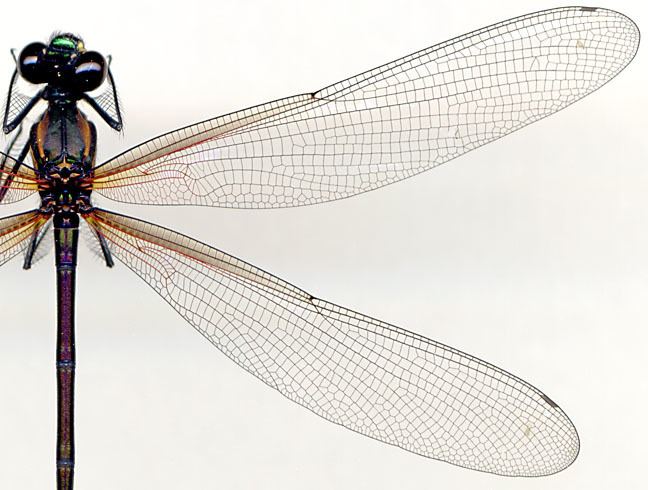 | ||
Lower classifications Calopteryx, Banded demoiselle, Beautiful demoiselle, Hetaerina, Neurobasis | ||
Hetaerina rosea rubyspot damselfly male zygoptera calopterygidae hetaerininae
The Calopterygidae are a family of damselflies, the suborder Zygoptera. They are commonly known as the broad-winged damselflies, demoiselles, or jewelwings. These rather large damselflies have wingspans of 50–80 mm (compared to about 44 mm in the common bluetail damselfly, Ischnura elegans) and are often metallic-coloured. The family contains some 150 species.
Contents
- Hetaerina rosea rubyspot damselfly male zygoptera calopterygidae hetaerininae
- Prachtlibellen calopterygidae
- Etymology
- Characteristics
- Behavior
- Classification
- References
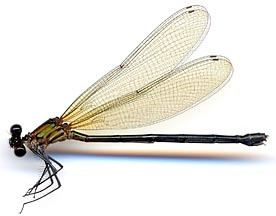
The Calopterygidae are found on every continent except Australia, New Zealand and Antarctica. They live along rivers and streams.
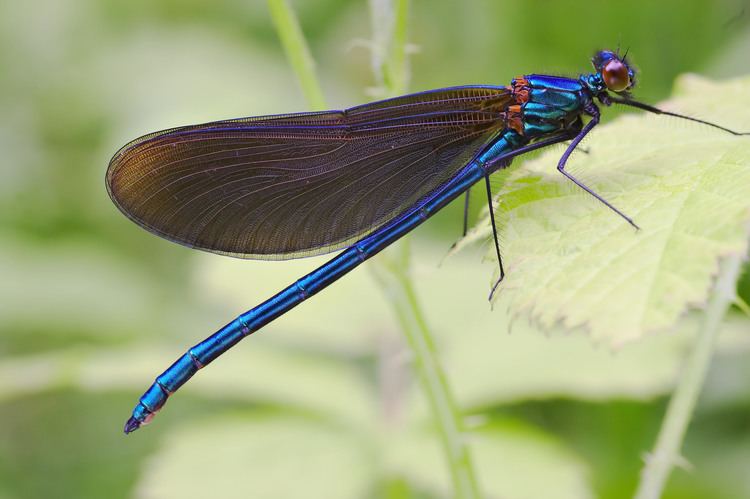
Prachtlibellen calopterygidae
Etymology
The name is derived from Greek kalos meaning beautiful and ptery meaning winged.
Characteristics
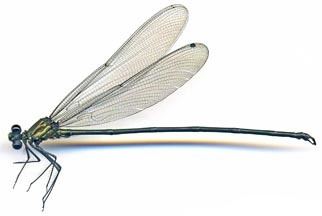
The adults have metallic bodies; their wings are broader, with wider bases than other damselflies, and at rest hold their wings parallel to the body, slightly elevated. Some species have conspicuously colored wings; in males, the wings are usually blue, without pterostigmas, in females green or brown. Species are often quite variable in color and patterning, and they are sexually dimorphic. Color intensity may fade with age. The wings are heavily veined, having often 18 or more antenodal veins. The first segment of their antennae is longer than the combined length of the other segments. They have a jerky, skipping form of flight and they perch horizontally on twigs near the water edge.
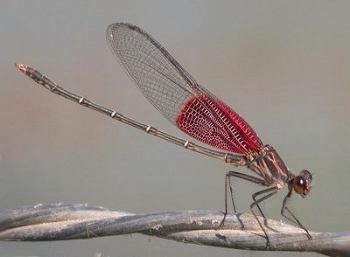
Calopterygidae nymphs have lateral gills are longer than the median gills. The nymphs have a flattened, pentagonal-shaped head, a long first antennal segment and long legs. They are found among submerged aquatic plants, woody debris and the exposed roots of streamside plants. There is a single generation per year.
Behavior
Males are often territorial, guarding riverine habitat that is sought after by females for egg deposition. Some males are not territorial. Within a species there may be a territorial and nonterritorial morph, which may be different in coloration.
Some species display courtship behavior, especially displays of wing movement by the male. At least one genus (Hetaerina) displays lekking behavior.
During mating, the male first removes other males' sperm from the female's reproductive tract, then places his own sperm there. The intromittent organ of the male has spines that physically remove rival sperm and also stimulate the female's muscles to contract and expel the sperm. In many species, the male accompanies the female when she searches for a site to lay eggs; in some cases, he even remains attached to her.
Classification
Subfamily Caliphaeinae Tillyard & Fraser, 1939 – the clearwings:
Subfamily Calopteryginae Selys, 1859 – the demoiselles:
Subfamily Hetaerininae Selys, 1853 – the rubyspots and others:
